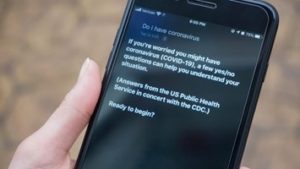Since March 2020 COVID-19 has changed the smooth and well-balanced routines of our lives. Maybe you have been teleworking or due to safety measures you meet your family and friends only on Skype. The epidemiological situation led to lockdowns in spring, and severe restrictions in fall. In both cases, to the closure of schools. Many teachers tried to move their lectures to an online environment, others gave instructions and homework through email or post. Parents, besides working from home, need to assist their children with distance learning. Unfortunately, distance learning often broadened the already existing inequality gap for children from a disadvantaged socio-economic background, migrant background, or with specific learning disorders.
There were different reasons – absence or lack of devices for learning in the family, inadequate space to study, or pupils needed much more support from their parent´s. For many teachers, it was the first experience with distance and online learning. Besides access to technology, teachers lacked tools and training on how to use them and how to effectively move their lessons to the online environment. All combined, it resulted in much-increased stress levels and workload. Last but not least, teachers struggled with how to involve pupils, motivate, engage them and support those with special educational needs. [1]

During and even boosted by the COVID-19 pandemic, different technological tools were developed or adjusted to fulfill the needs that had arisen with the crisis. Chatbots along with news and media served as a tool to enable crisis communication with citizens. Chatbots can provide answers to questions and can simulate a conversation within the limits of their training. E.g. Different chatbots help their users recognize COVID-19 symptoms, find out the latest news about COVID-19 or learn where testing centers are in their area [2][3]. With the possibility to interact both through voice and text, chatbots were able to help more people. Conversational assistants turned out to be extremely useful. In a time of high demand for information about the disease and restrictions, chatbots were able to answer many people at the same time, 24 hours 7 days per week. Which helped to reduce the pressure on officers and healthcare providers.
In the Education sector, classes transferred from the physical environment to online. Unfortunately, teachers were often not able to follow the school curriculum as planned with distance learning. For both teachers and pupils, it is much more difficult to focus when a lesson is online. Some recommendations advised pupils to spend „only“ 1-3 hours per day attending online classes depending on the pupils’ age.[4] That does not provide many opportunities for teachers to engage all pupils, support pupils with specific learning disorders or other learning needs. Out of online classes, the content was supposed to be learned through self-study. This often required help from the parents.
Although pupils and students might not have learned all the content of all subjects, there are other soft skills they acquired such as independence, time management and self-management skills[5]. Some parents appreciate their children learning at their own pace, the absence of the morning rush and a safe stress-free environment[6].
Developing and integrating chatbots might be a new and exciting opportunity on how to facilitate the needs of different stakeholders (pupils, parents, teachers, school institutions). It won´t replace communication and the care of human beings, but it might help teachers and school employees with answering repetitive questions or help teachers to mediate content for pupils. Teachers might afterwards focus on practical and more engaging activities. Due to their practical use, chatbots might be integrated not only as a part of information delivery but also developed further to help schools, teachers and parents when pupils go back to classrooms [7].
COVID-19 gave an impulse to the digitalisation of the classroom, to the incorporation of new technologies in the daily work of teachers and students. It is in our best interest to provide tools that will ease the difficulties for all stakeholders. In the end, we all have a common goal – to raise the next generation of people the best we can with the best tools we can provide so they thrive in our already so globalized world.
Logopsycom´s Erasmus + project Tutorbot is being developed with teachers´ and students´ needs in mind. It aims to ease teachers´ work and support their lessons as well as engage and motivate pupils in their learning process including those with special learning disorders. Teachers will have an opportunity to create their own chatbots and use them to support their regular lessons – upload additional content, homework, insert links for interesting videos or create exercises where pupils´ can test their knowledge. The pupils will be engaged in a conversation with the chatbot and in charge of when and what they study. Stay tuned because the Tutorbot project is coming to its end and 4 different ready-to-use chatbots will be released soon!

Here are our previous articles on Tutorbot:
- The challenges of an innovative application of chatbots in education
- 4 things we learnt from developing a tutor chatbot from scratch
- TUTORBOT: a chatbot tutor for learners in VET
![]() Follow us on Facebook and Twitter to know more about the progress of this project.
Follow us on Facebook and Twitter to know more about the progress of this project.
#tutorbot #erasmusplus
Visit the project website : https://www.tutorbot.eu
In collaboration with: EDULOG, AKETH [Developmental Centre Of Thessaly – D.C.T.], CEPS Projectes Socials, Grone-Bildungszentren Berlin gGmbH, IFOA
Sources:
[1] Survey on online and distance learning – Results. (2020). Retrieved from https://www.schooleducationgateway.eu/en/pub/viewpoints/surveys/survey-on-online-teaching.htm
[2] Farr, C., & Stankiewicz, K. (2020). Apple updated Siri to help people who ask if they have the coronavirus. Retrieved from https://www.cnbc.com/2020/03/21/apple-updated-siri-to-help-people-who-ask-if-they-have-coronavirus.html
[3] Build a Chatbot in a Crisis Situation – Call for Code – IBM Developer. (n.d.). Retrieved from https://developer.ibm.com/callforcode/get-started/covid-19/crisis-communication/
[4] Trochová, M. (2020). Děti učením netrapte: Tohle je maximální počet hodin, který vydrží. Retrieved from https://tn.nova.cz/clanek/deti-ucenim-netrapte-tohle-je-maximalni-pocet-hodin-ktery-vydrzi.html
[5] Roberts, K. (2020). What Are the Benefits of Distance Learning? | LearnSafe. Retrieved from https://learnsafe.com/what-are-the-benefits-of-distance-learning/
[6] Resource: Survey on distance learning held by Logopsycom 9-10/2020
[7] Moraes Neto A. J. & Fernandes, M. A. (2019). Chatbot and Conversational Analysis to Promote Collaborative Learning in Distance Education. 2019 IEEE 19th International Conference on Advanced Learning Technologies (ICALT) in Macei, Brazil, 324-326. doi: 10.1109/ICALT.2019.00102. https://ieeexplore.ieee.org/document/8820823
Picture 1 retrieved from: Farr, C., & Stankiewicz, K. (2020). Apple updated Siri to help people who ask if they have the coronavirus. Retrieved from https://www.cnbc.com/2020/03/21/apple-updated-siri-to-help-people-who-ask-if-they-have-coronavirus.html

